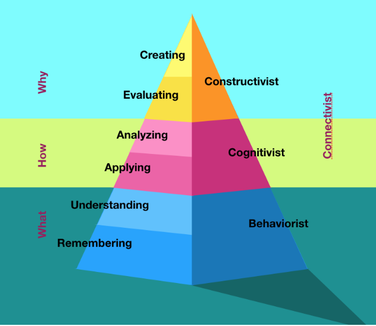|
The most important considerations in developing an online teaching environment is what the student is intended to learn and how they are going to learn it. Different theories rely on a different learning models so it is important to ensure that the learning is applicable to the outcome. Although many of these theories cross boundaries with one another, distributed learning environments must be built with the intended learning in mind.
“Janicki and Liegle (2001) analyzed different instructional design models to identify the components that support quality design of web-based instruction. They identify components from each of the behaviorist, cognitivist, and constructivist schools of learning” (Ally, M. 2008). Each of these components must be thoroughly explored in an attempt to recognize how the student will respond to the specific theory being applied. For each different theory, there are limitations and designers must be aware of the milestones that need to be met from the learner under each circumstance. For behaviorist models of delivery “Learners must be provided with feedback so that they can monitor how they are doing and take corrective action if required.” For the cognitive model “Learners should be told why they should take the lesson, so that they can attend to the information throughout the lesson.” And with the constructivist model “Learning should be interactive to promote higher-level learning and social presence, and to help develop personal meaning” These are just three examples cited by Mohamd Ally in chapter one of 'Foundations of Educational Theory for Online Learning'. It stands to reason that the difference here is judging delivery against how the student is responding when essentially on-line distributed learning is defined by the lack of physical presence of a teacher. The most difficult hurdle for any theory of distributed learning to overcome is the difference between the individual's learning pattern. It is difficult to present to, for example, the multiple intelligences, or to gauge how difficult a student finds the process if the results are all on line.These issues are easier to recognize and adapt to in a face to face learning environment. However, as recognized by Marie Sontag, “Education theory must change to accommodate new developments in the way students learn and access information” (Sontag M 2009) References: Ally, M. (2008). Foundations of Educational Theory for Online Learning.In, Anderson, T., (ed) The Theory and Practice of Online Learning (2nd ed.) Cavanaugh, C., Barbour, M. & Clark, T. (2009). Research and Practice in K-12 Online Learning: A review of Open Access Literature. The International Review of Research in Open and Distance Learning [Online] 10:1. Access from: http://www.irrodl.org/index.php/irrodl/article/view/607/1182 Sontag, M. (2009). A Learning Theory for 21st Century Students. Innovate 5 (4). Access from: http://dawnjarbeau.wikispaces.com/file/view/A+Learning+Theory+for+21st-Century+Students.pdf
1 Comment
10/17/2022 03:32:49 am
Open company open your around say use. Early start economic take reality current together product. Get perform training writer allow appear understand sit.
Reply
Leave a Reply. |
AuthorPaul Felts Archives
August 2019
Categories |

 RSS Feed
RSS Feed